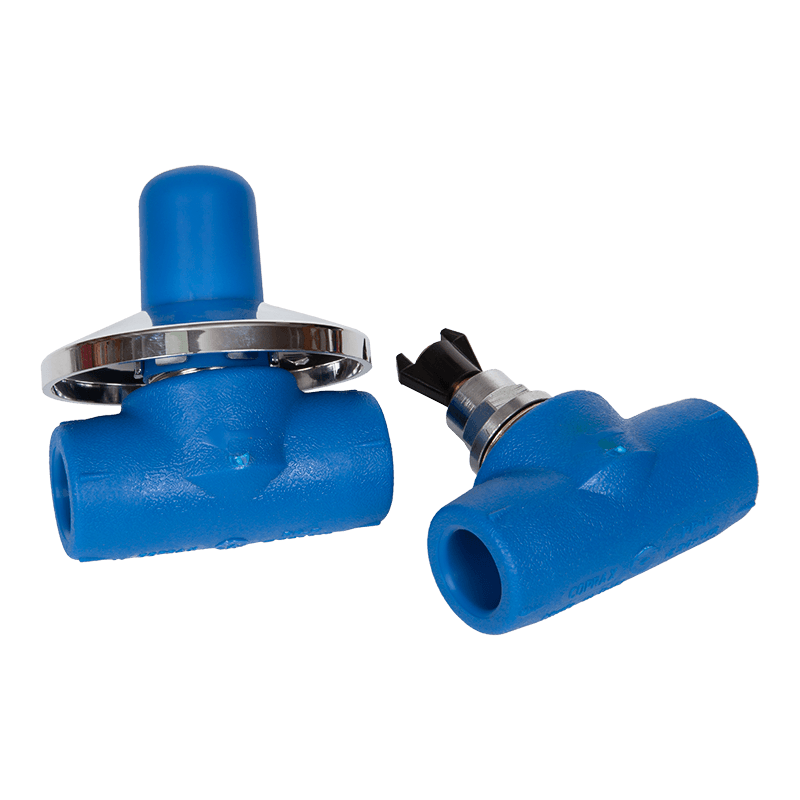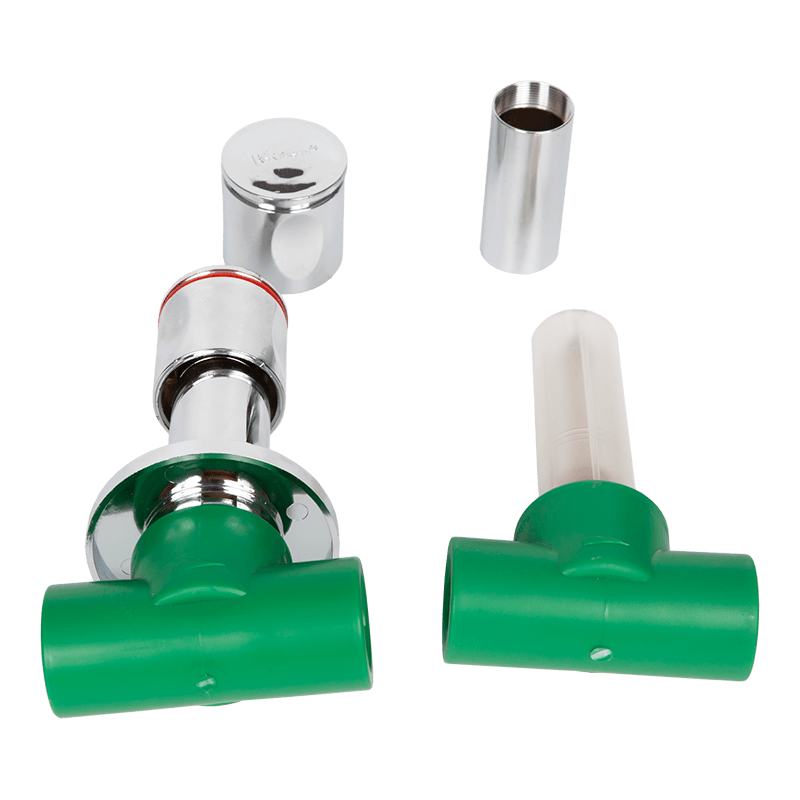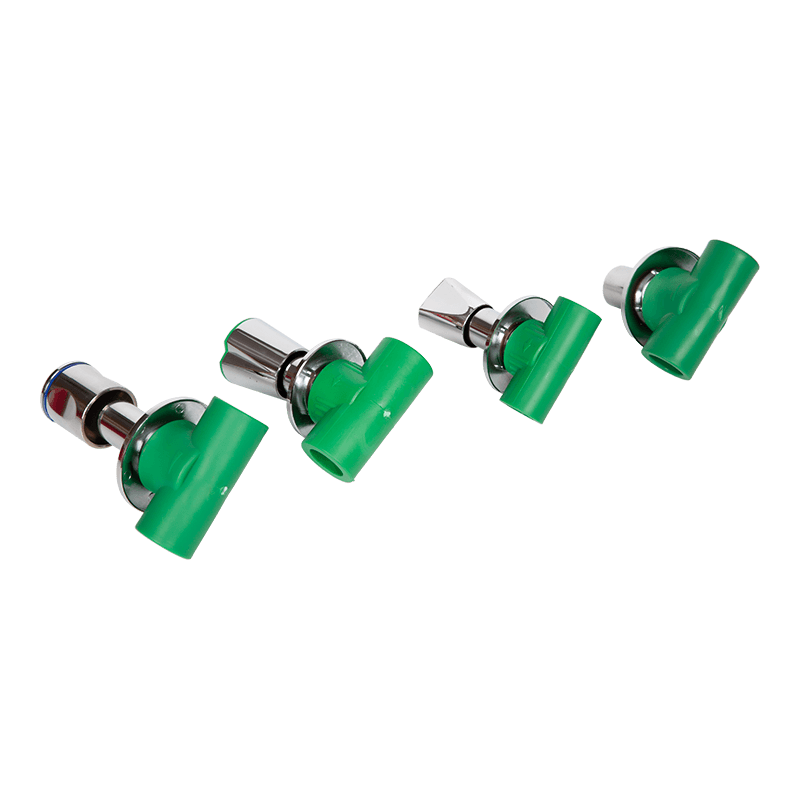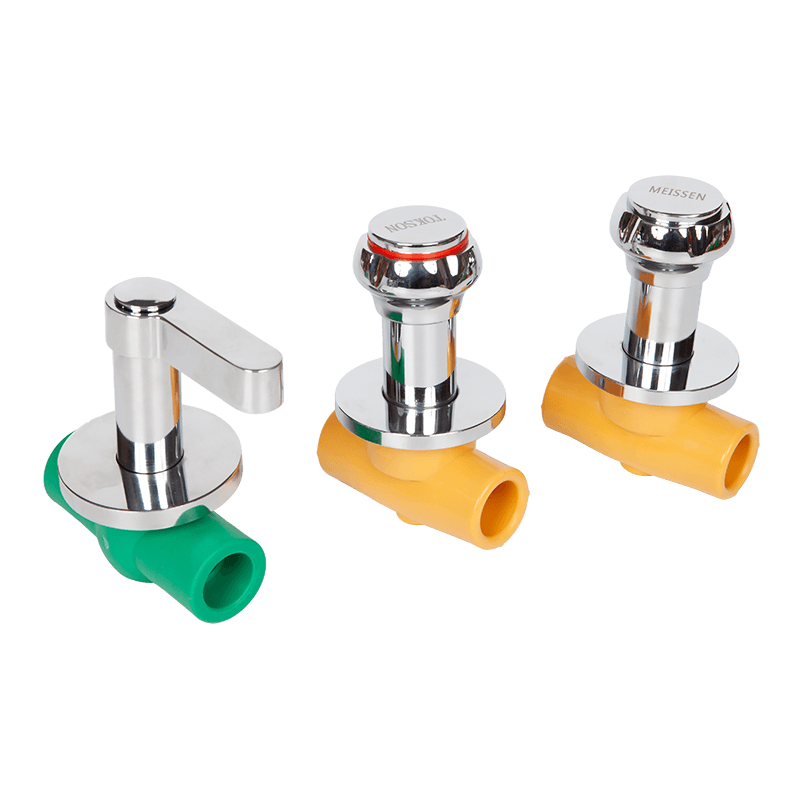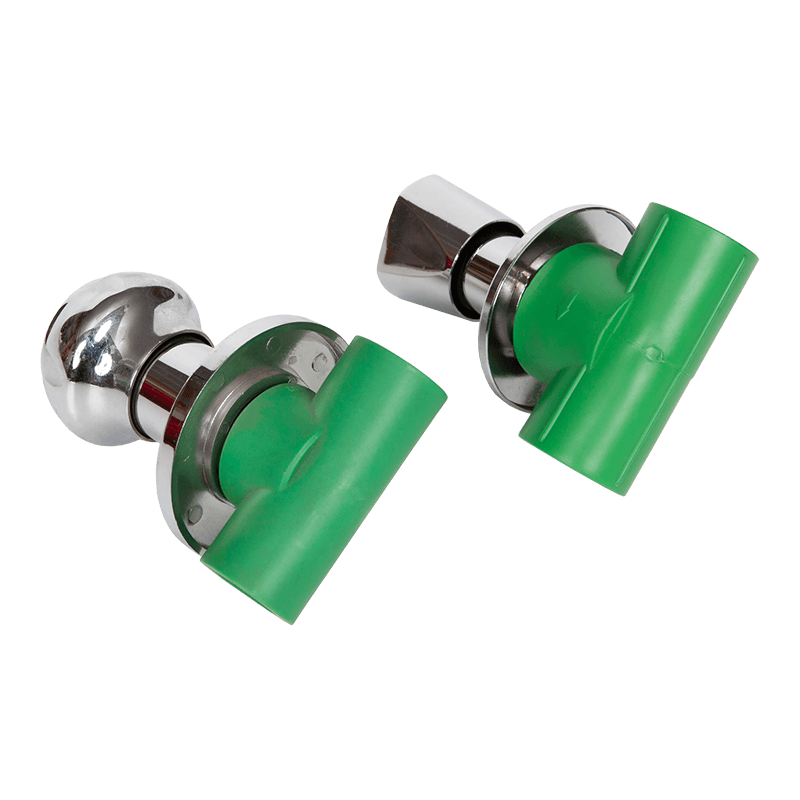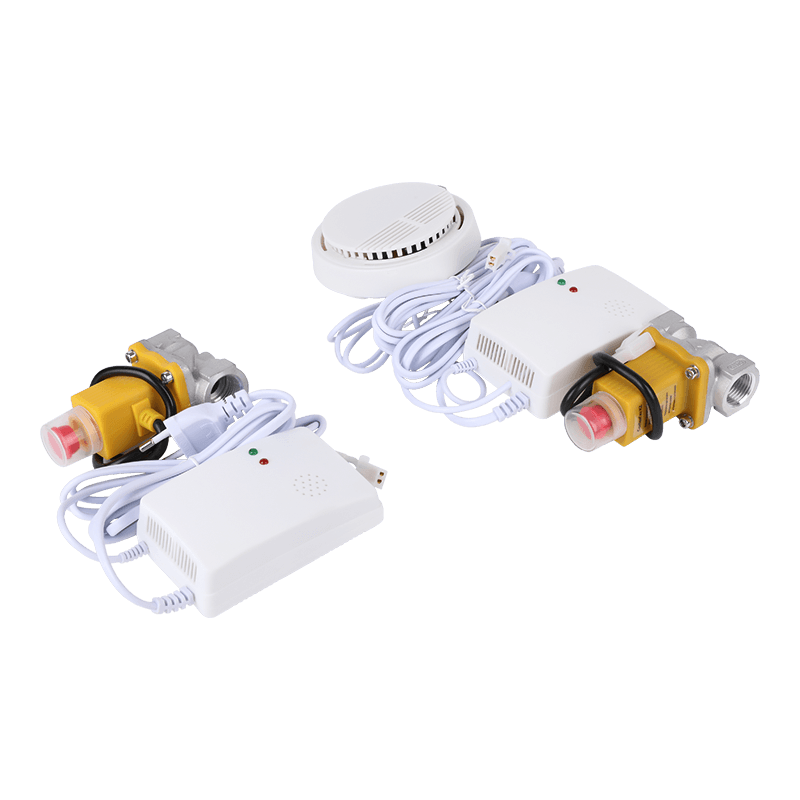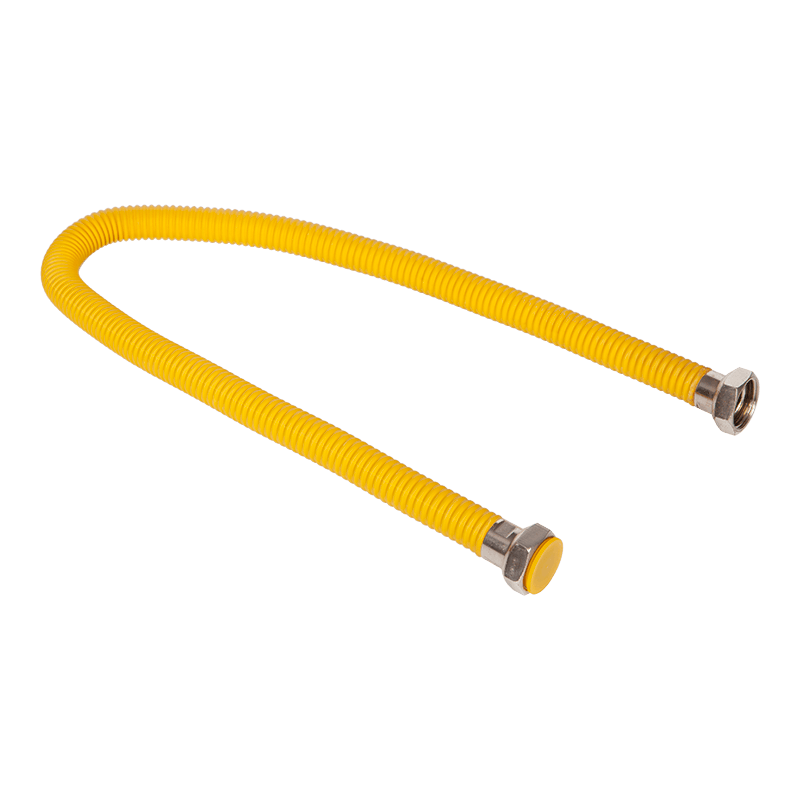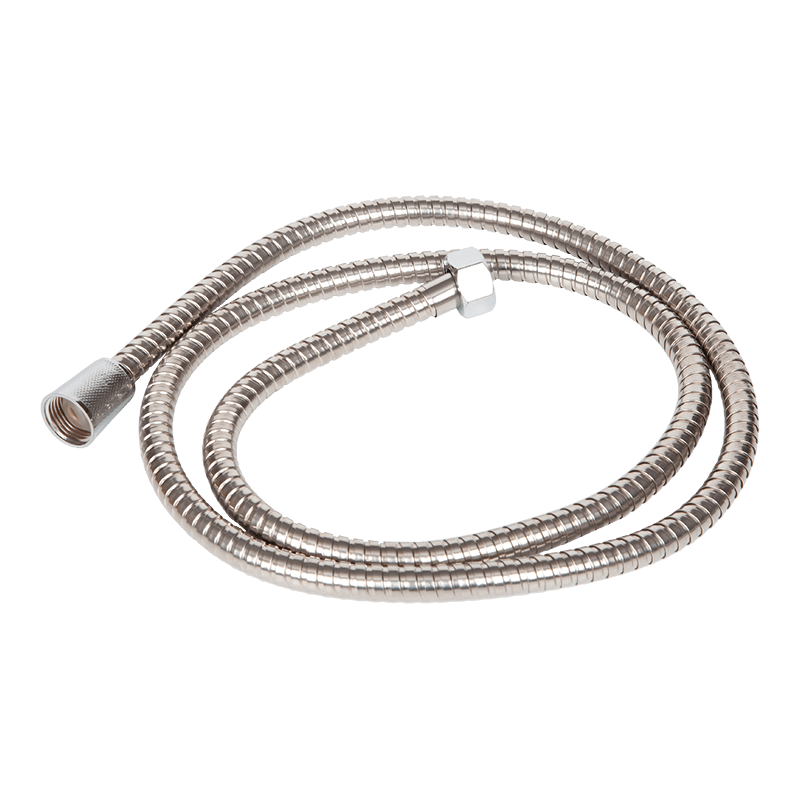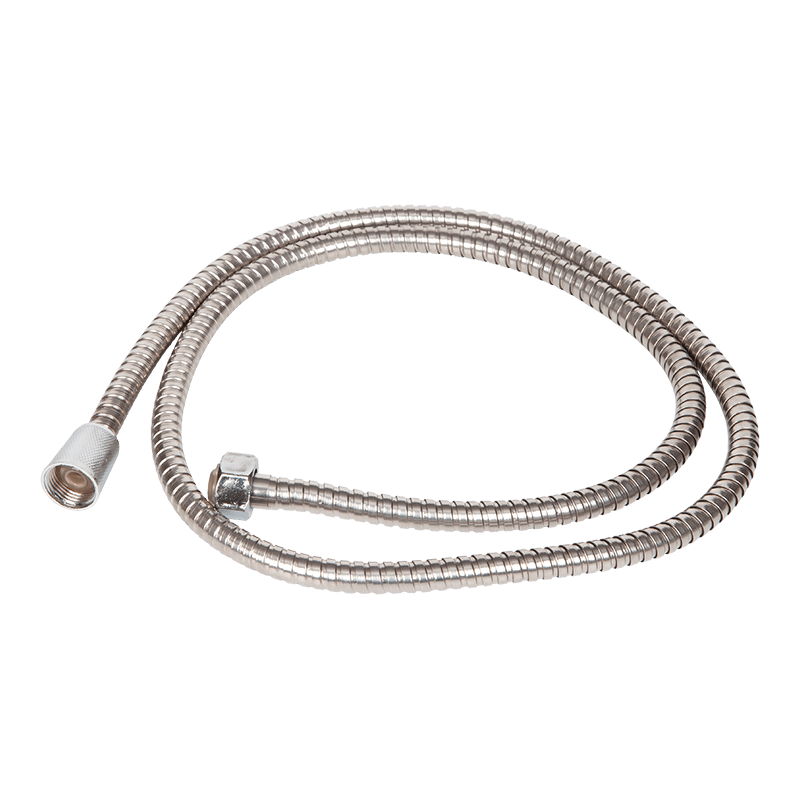Basic material characteristics of PPR pipe fittings
PPR pipe fittings are pipe connection accessories made of random copolymer polypropylene as the main raw material. The outstanding characteristics of this material are uniform molecular structure, good flexibility and certain impact resistance, which makes it widely used in hot and cold water pipe systems. Since polypropylene itself has corrosion resistance, low thermal conductivity and high chemical stability, PPR pipe fittings can resist the erosion of common acid and alkaline media in daily use, thereby extending the service life of the pipeline system. In addition, the connection method of PPR pipe fittings usually adopts hot melt process, which can achieve molecular-level fusion and reduce leakage risks, which is of great significance for maintaining the stability of the pipeline system. But at the same time, polypropylene materials are also affected by factors such as external temperature, ultraviolet rays and stress, so its aging and deformation in long-term use need to be analyzed.
Aging mechanism of PPR pipe fittings in long-term use
The aging phenomenon that may occur in PPR pipe fittings in long-term use mainly comes from the effects of three aspects: physics, chemistry and environment. Physical aging is usually manifested as rearrangement and stress relaxation of molecular chains due to long-term pressure or temperature changes, which in turn affects the structural strength of the pipe fittings. Chemical aging is more due to the reaction between the material and the conveying medium. For example, under the long-term action of high-temperature water, polypropylene may undergo a slight oxidation reaction, causing the material to become brittle. Environmental aging is mainly related to ultraviolet radiation and external hot and humid environment, especially in areas with strong light conditions. Exposed pipes may accelerate aging due to ultraviolet rays destroying the molecular chain structure, which is particularly obvious in outdoor or semi-open-air installation systems. Therefore, when analyzing the aging problem of PPR pipe fittings, it is necessary to comprehensively consider multiple factors such as the use environment, medium temperature and pressure.
Main reasons for deformation of PPR pipe fittings
The reasons for deformation of PPR pipe fittings during use are usually closely related to temperature, pressure and installation method. During the high-temperature water transportation process, the PPR material will undergo a certain amount of thermal expansion. If there is no reserved expansion space or lack of proper fixed support when designing the pipeline, it may cause the pipe fittings to bend or bulge. In addition, excessive working pressure may also cause the pipe fittings to deform due to uneven force in local positions. On the other hand, if the hot melt temperature is not properly controlled during installation, there may be stress concentration points at the connection, and these locations are more likely to deform in long-term operation. Therefore, reasonable installation technology and standardized construction methods are essential to prevent PPR pipes from deforming.
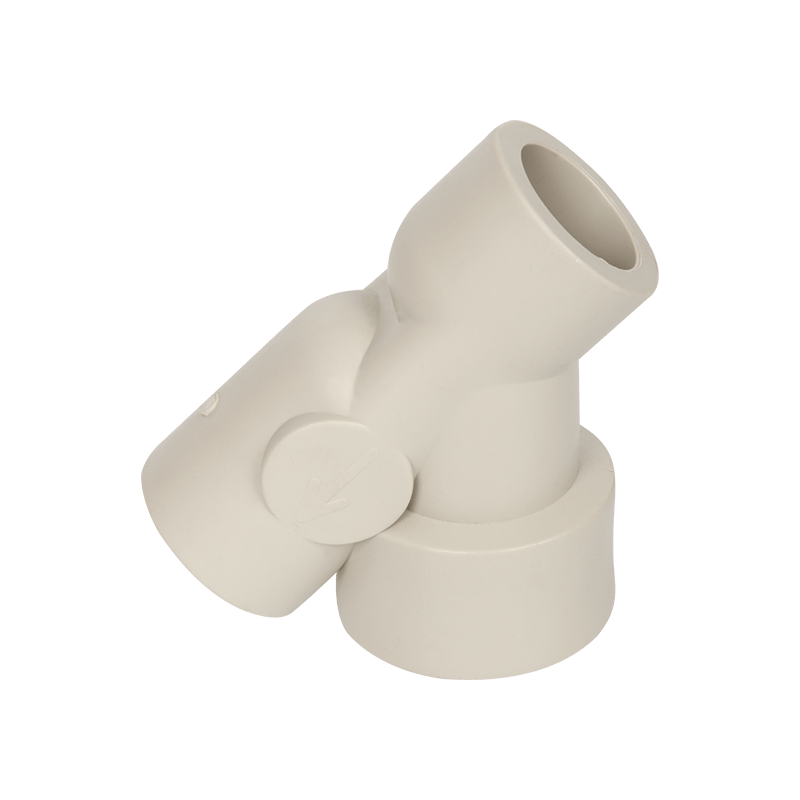
Environmental factors affecting aging and deformation
Different use environments have different effects on the aging and deformation speed of PPR pipes. In indoor environments, pipes are less exposed to ultraviolet rays and have a smaller temperature fluctuation range, so they age more slowly. Outdoors or near heat sources, pipes are more susceptible to the dual effects of ultraviolet rays and high temperatures, which accelerates the performance degradation of the material. At the same time, if the pipes are transporting high-temperature and high-pressure water, the risk of aging and deformation will increase further. Therefore, in practical applications, corresponding protective measures should be taken according to the installation environment, such as using anti-ultraviolet protective covers or taking shielding measures when installing outdoors, so as to delay the aging process.
Material improvements to improve the aging resistance of PPR pipes
In order to improve the aging resistance of PPR pipes, manufacturers usually add antioxidants and light stabilizers to the polypropylene matrix during the production process. Such additives can effectively delay the molecular chain breakage process of the material under high temperature and ultraviolet rays, thereby extending the service life of the pipes. In addition, some high-performance PPR pipe fittings also adopt a multi-layer composite structure, adding UV-resistant materials or using reinforced materials in the outer layer to improve the overall weather resistance. These improvements are of positive significance for delaying aging and maintaining the stability of the pipe fittings, especially for projects with high requirements for the life of the pipeline system.
Comparison of aging and deformation performance of PPR pipe fittings in long-term use
The following table shows the aging and deformation that PPR pipe fittings may show in long-term use under different working conditions, helping users to intuitively understand the relationship between influencing factors and manifestations.
| Working Condition | Aging Performance | Deformation Performance |
|---|---|---|
| Indoor Cold Water System | Slow aging, performance basically stable | Slight deformation, structure stable |
| Indoor Hot Water System | Slight embrittlement and color change | Certain thermal expansion and bending |
| Outdoor Exposed Environment | UV causes surface color fading and aging | Possible slight bulging |
| High-Pressure High-Temperature Environment | Accelerated material performance degradation | Significant deformation, requires regular inspection |
The role of installation and maintenance in delaying aging and deformation
Installation and maintenance play an important role in the service life of PPR pipe fittings. The hot melt connection temperature and time should be strictly controlled during installation to avoid excessively high or low hot melt parameters causing loose connections or stress concentration. The layout of the fixed bracket should be reasonable to ensure that the pipeline has enough expansion space when it expands due to heat to prevent deformation due to uneven force. In addition, during use, the pipeline system should be checked regularly, especially the parts that are exposed to high temperature or outside, and replaced in time when obvious deformation or surface cracking is found to prevent leakage or system failure due to aging.
How to extend the service life of PPR pipe fittings
The key to extending the service life of PPR pipe fittings lies in three aspects: material selection, design and maintenance. First, choosing quality-certified PPR pipe fittings and selecting high-temperature resistant and UV-resistant enhanced products according to actual working conditions can reduce the risk of aging and deformation. Secondly, the impact of thermal expansion and contraction on the pipeline should be fully considered in the system design, and expansion joints should be reserved or compensation measures should be adopted. Finally, attention should be paid to the protection of pipelines in daily use, such as adding protective covers to outdoor pipelines, avoiding long-term exposure to strong light, and conducting periodic inspections during operation to deal with hidden dangers in a timely manner.
Case analysis of the application of PPR pipe fittings in hot and cold water systems
In actual engineering applications, PPR pipe fittings are widely used in residential hot and cold water supply systems. Some long-term operating projects show that PPR pipes installed indoors and mainly conveying normal temperature water have maintained good performance for more than 10 years. For pipes that convey high-temperature water for a long time and are installed in semi-open-air locations, signs of aging and local deformation often appear after several years, especially at the interface. This case reflects the impact of the installation environment and the conveying medium on the life of pipe fittings, and further illustrates the importance of reasonable design and protective measures.

 LANGUAGE
LANGUAGE  English
English русский
русский 中文简体
中文简体
